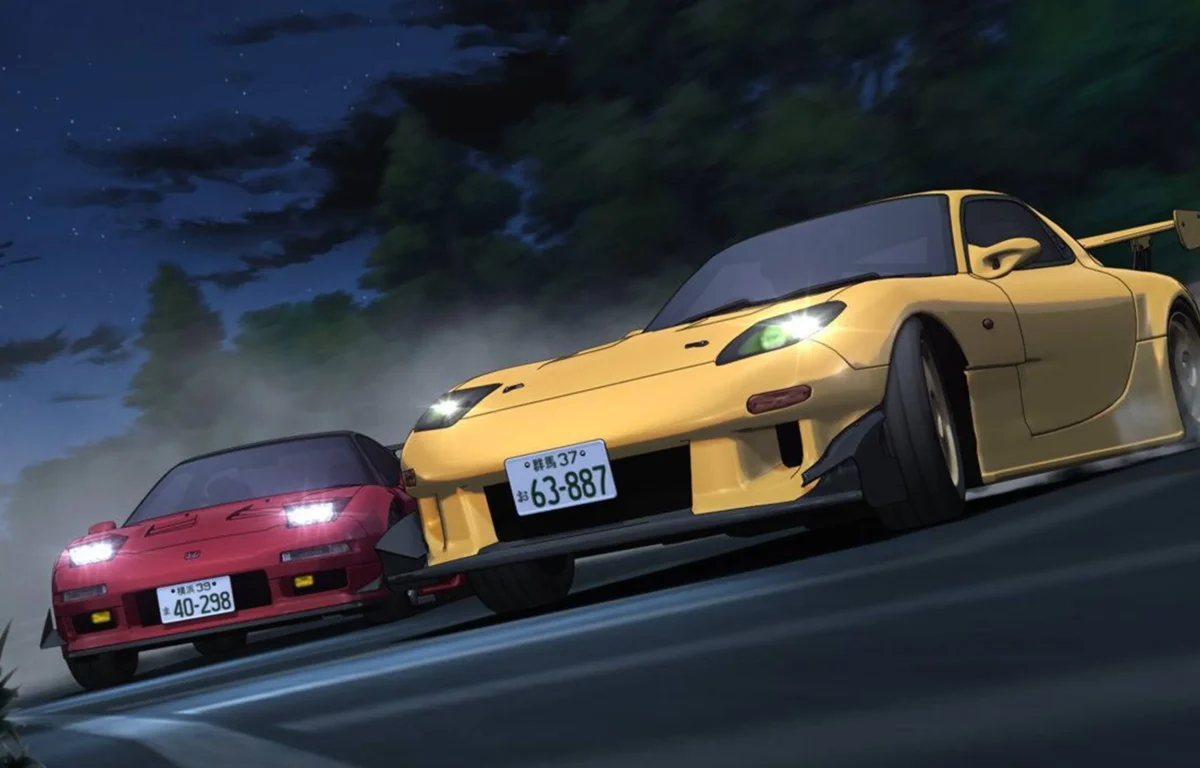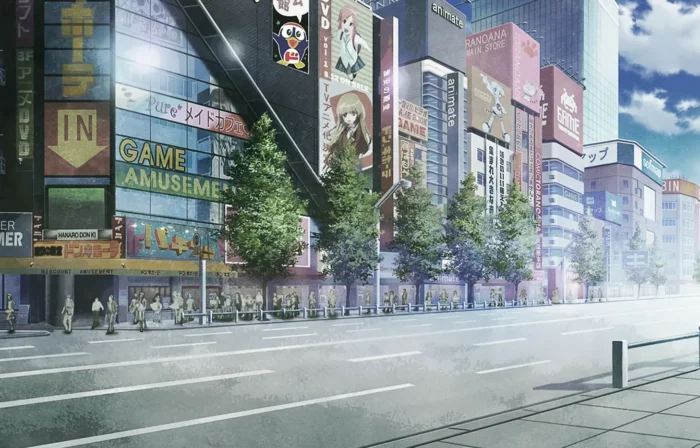Since its debut in the late 1990s, Initial D has left an indelible mark on the Western perception of the Japanese automotive landscape. Through its high-octane races, heart-pounding drifts, and iconic cars, the anime series has captivated audiences and reshaped their understanding and appreciation of Japanese Domestic Market (JDM) car culture.
Niche, but no longer
Before Initial D, the perception of JDM car culture in the West was somewhat limited. While brands like Toyota, Nissan, and Honda were known, their performance-oriented models and the underground racing scene were not widely recognized. Japanese cars were often viewed as reliable but lacked the street cred and excitement associated with American muscle cars and European sports cars.
Upon its release, Initial D garnered a cult following among enthusiasts, praised for its adrenaline-pumping races, meticulous attention to automotive detail, and captivating storyline. However, its impact was initially confined to a niche audience. Fast forward to the 2020s, and Initial D has achieved legendary status. Its influence has transcended niche fandom, with the series enjoying widespread recognition and appreciation for its role in popularizing JDM car culture in the West.
Popularity of Highly Featured Cars in the Series such as the Trueno
One of the defining elements of Initial D is its lineup of highly featured cars, notably the Toyota AE86 Sprinter Trueno. Nicknamed the “Hachi-Roku” (Japanese for “eight-six”), the Trueno became an icon both in the series and among enthusiasts. Its lightweight chassis, rear-wheel-drive configuration, and rev-happy engine made it the quintessential drift machine, further fueling its popularity in real life.

Initial D live action movie (2005)
One of the standouts in Initial D is the Toyota AE86 Sprinter Trueno, or “Hachi-Roku” for short. This little beast is the heart and soul of the series, piloted by protagonist Takumi Fujiwara as he tears up the mountain passes. Its classic white and black two-tone paint job becomes instantly recognizable as it battles rival racers in intense drift battles.
But the Trueno isn’t the sole star of the show. Initial D boasts an ensemble cast of iconic rides, each with its own moment to shine. The turbocharged Nissan Silvia, driven by the skilled racer Ryosuke Takahashi, showcases its agility and precision as it tackles hairpin turns with ease. Meanwhile, the high-revving Mazda RX-7, under the control of the enigmatic Keisuke Takahashi, unleashes its rotary power in exhilarating downhill sprints.
Throughout the series, viewers are treated to thrilling showdowns featuring these legendary cars. Whether it’s witnessing the lightning-fast acceleration of the Honda S2000 or the raw power of the Mitsubishi Lancer Evolution, each vehicle is meticulously depicted, down to its unique styling and performance characteristics.
And who could forget the iconic Nissan Skyline GT-R, affectionately known as the “Godzilla” of the streets? Piloted by the skilled racer Takeshi Nakazato, this legendary machine dominates the competition with its unparalleled speed and handling.
With a diverse lineup of cars, Initial D delivers pulse-pounding action and adrenaline-fueled races that showcase the best of JDM performance and style. From the squeal of tires to the roar of engines, each car’s presence on-screen is a testament to its legacy in the world of automotive culture.
Escalating Prices of Said Cars Both in Japan and in the West
The popularity of cars featured in Initial D, particularly the AE86 Trueno, has led to a surge in demand and subsequent price escalation. In Japan, where the AE86 holds legendary status, pristine examples command premium prices on the used car market. Similarly, in the West, enthusiasts clamor for these iconic models, driving up prices and making them coveted collector’s items.
The fervent love for JDM (Japanese Domestic Market) cars, fueled in part by iconic representations in media like Initial D, has led to a significant surge in demand for these legendary vehicles. Notably, cars featured prominently in the series have seen their prices skyrocket over the years. This surge in demand has been driven by a combination of factors, including scarcity, nostalgia, and the vehicles’ cult status among enthusiasts.
Internet Culture’s Influence
The rise of internet culture has played a significant role in further driving up the prices of iconic JDM cars. Online forums, social media groups, and enthusiast communities have provided a platform for fans to connect, share information, and showcase their prized possessions. Moreover, internet culture has fostered a sense of community among JDM enthusiasts, amplifying the hype surrounding these iconic cars. Its like the world’s largest persistent car meet. Viral videos, online reviews, and virtual car meets have further fueled interest in JDM culture, driving demand and contributing to the escalation of prices.
In essence, the intersection of media representation, enthusiast communities, and internet culture has propelled the prices of iconic JDM cars to new heights. As long as the love affair with these legendary vehicles continues to thrive, their value is likely to remain on an upward trajectory, cementing their status as coveted collector’s items in the world of automotive culture.
Forging Bonds
One of the distinctive features of Initial D is the portrayal of car teams or racing crews, each with its own unique identity and driving style. These teams, such as the Akina Speed Stars, RedSuns, and Emperor, not only serve as rivals to protagonist Takumi Fujiwara but also add depth and richness to the series’ narrative. The intense rivalries and camaraderie among team members showcase the importance of teamwork and strategy in the world of street racing. Through their battles on the mountain passes, Initial D highlights the bonds formed within these teams, as well as the competitive spirit that drives them to push the limits of their cars and their own abilities. As a result, fans of the series often identify with specific teams, forging connections and allegiances that extend beyond the screen and into real-life car communities.
A legacy
Initial D’s impact reverberates beyond its own realm, notably in the Fast and Furious franchise. Tokyo Drift, the third installment in the series, draws clear inspiration from Initial D, for example. As the title would imply, drifting is a central theme and pays heavy homage to Japanese car culture. Tokyo Drift, in turn, influenced subsequent Fast and Furious films, shaping their portrayal of underground racing and introducing elements of JDM aesthetics and performance.

Han’s Veilside RX7 in The Fast and the Furious: Tokyo Drift (2006)
A Timeless Classic
Initial D has undeniably left an indelible mark on Western perception of JDM car culture. From its exhilarating races to its iconic cars and pulsating soundtrack, the series has captivated audiences and sparked a newfound appreciation for Japanese automotive heritage. As its influence continues to reverberate through popular culture, Initial D’s legacy as a cultural phenomenon remains stronger than ever. As a result it has cemented its status as a timeless classic in the archives of anime and automotive history.




